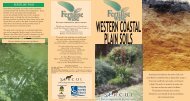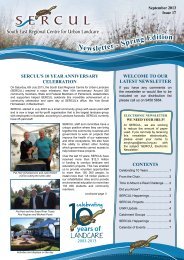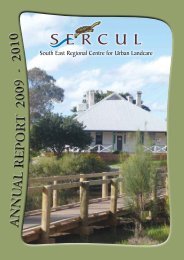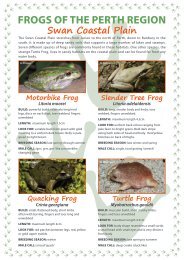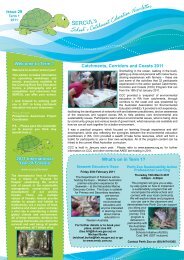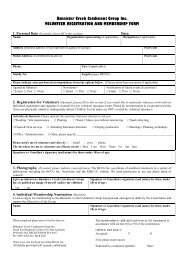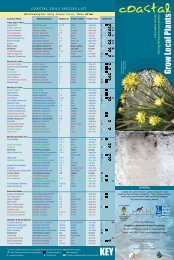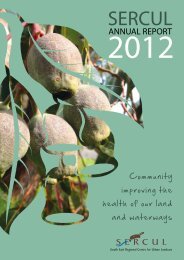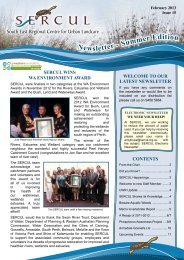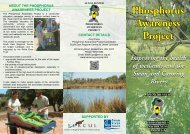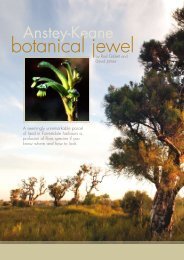Native Bees of Western Australia - SERCUL
Native Bees of Western Australia - SERCUL
Native Bees of Western Australia - SERCUL
You also want an ePaper? Increase the reach of your titles
YUMPU automatically turns print PDFs into web optimized ePapers that Google loves.
Megamouth Bee (Leioproctus muelleri)<br />
In December 2010, a species <strong>of</strong> native bee entirely<br />
new to science was discovered at Anstey-Keane<br />
Dampland (a nature reserve in Perth’s southeastern<br />
suburb <strong>of</strong> Forrestdale).<br />
This newly-discovered bee species Leioproctus<br />
(Ottocolletes) muelleri was nicknamed<br />
“Megamouth” because <strong>of</strong> the impressively large<br />
mandibles <strong>of</strong> its males (the male’s head is also<br />
comparatively large). Another feature that sets this<br />
species apart is the distinctive nest-guarding<br />
behaviour <strong>of</strong> the males, which frequently results in<br />
lively skirmishes at nest entrances. This behaviour<br />
is not known to occur in any other species <strong>of</strong><br />
solitary bee.<br />
Another interesting feature <strong>of</strong> this ground-nesting<br />
bee is the ability <strong>of</strong> the dormant larvae to survive<br />
inundation during winter in waterpro<strong>of</strong> brood cells.<br />
Because L. muelleri has to date been found<br />
nowhere but one small site at Anstey-Keane<br />
Dampland, it is reasonable to assume (there being<br />
no evidence to the contrary) that this species is<br />
extremely rare if not critically endangered.<br />
Protecting our native bees<br />
<strong>Native</strong> bees are an important component <strong>of</strong><br />
biodiversity: the valuable part they play in<br />
pollination helps to maintain the health and<br />
viability <strong>of</strong> natural ecosystems.<br />
It is therefore crucial that we protect our native<br />
bees, and the best way to do that is to protect the<br />
bushland in which they live. Clearing native<br />
bushland destroys not only vegetation but<br />
immeasurable numbers <strong>of</strong> animals - including<br />
native bees.<br />
Blue-banded bees: buzz-pollinating a Dianella flower (left) & foraging at<br />
Verticordia densiflora<br />
Another way we can help our native bees is by growing<br />
native plants in our gardens. Jacksonia, Dianella,<br />
Lechenaultia, Dasypogon, Regelia, Verticordia and<br />
Calytrix are just some <strong>of</strong> the many local plants favoured by<br />
these very special insects.<br />
All photographs (except the leaf-cutter bee) were taken at<br />
Anstey-Keane Dampland<br />
Forrestdale<br />
Clockwise from top left: L. muelleri pollen-laden female entering nest; male<br />
at entrance to nest burrow; male, showing large head and mandibles; two<br />
males fighting at entrance to nest burrow; female emerging from nest<br />
burrow.<br />
Text & photos by Bryony Fremlin




